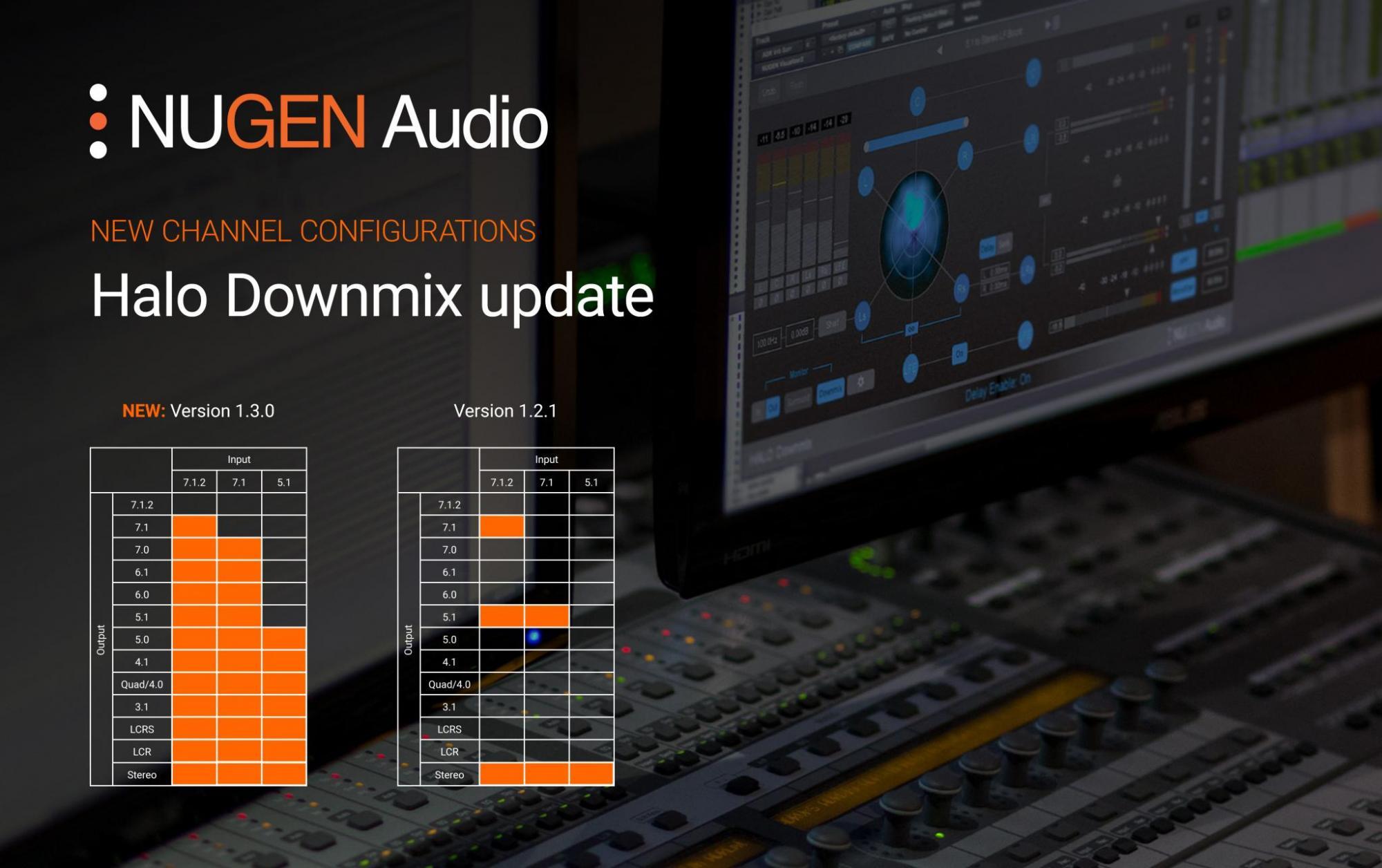Latest Version Allows for Downmixing to Additional Intermediate Formats and Configurations
LEEDS, UK – NUGEN Audio unveils the latest version of its Halo Downmix, which increases its compatibility and allows for greater flexibility and collaboration across a broad spectrum of project types. NUGEN has broadened the plug-in’s channel count support to address less common output formats. With this update, Halo Downmix is capable of downmixing from 7.1 and 5.1 to any of the following configurations; 7.0, 6.1, 6.0, 5.1, 5.0 and 4.0, as well as LCR and stereo. With the optional 3D extension, downmixing from 7.1.2 is also supported.

“Our software engineers have been hard at work on these latest Downmix updates, and we are very excited to bring it to market;” says Paul Tapper, CEO, NUGEN Audio. “With these changes, we effectively ensure that Halo Downmix is capable of supporting all of the same channel arrangements as Halo Upmix. This allows users to fill in the audio gaps by taking productions from Netflix-compliant 7.1.2 Dolby Atmos formats fully down to lower channel counts.”
Included in both the NUGEN Post bundle and Surround Suite packages, Halo Downmix enables precise surround balancing, mix monitoring and stereo fold-down.
The perfect complement to any surround production toolset, Downmix is the glue that brings a workflow together. The implementation of the latest updates makes it possible for production mixers to deliver projects in a wide array of formats, with ease and without compromise.
It features multiple monitoring modes and versatile downmix balancing; along with quick mute and solo controls, promote rapid assessment and critical listening. The software enables users to regulate LF content, maintain dialog clarity and control excess ambient energy. The plug-in can also be used in conjunction with the included Receive plug-in to enable parallel surround/stereo workflows; resulting in rapid A/B listening checks.
Further, Halo Downmix is able to quickly mitigate the unsatisfactory results of other standard downmix coefficients. This makes it possible to produce a more coherent mix. Additionally, levels of individual channels and balance of direct versus diffuse sound can be adjusted to fine-tune or re-balance surround audio where access to an original mix is not possible.
